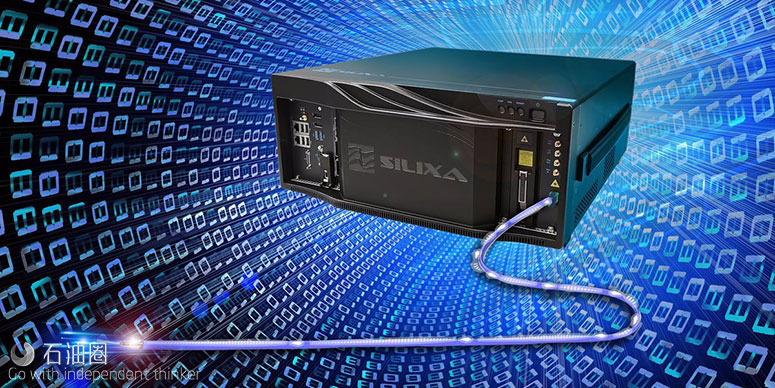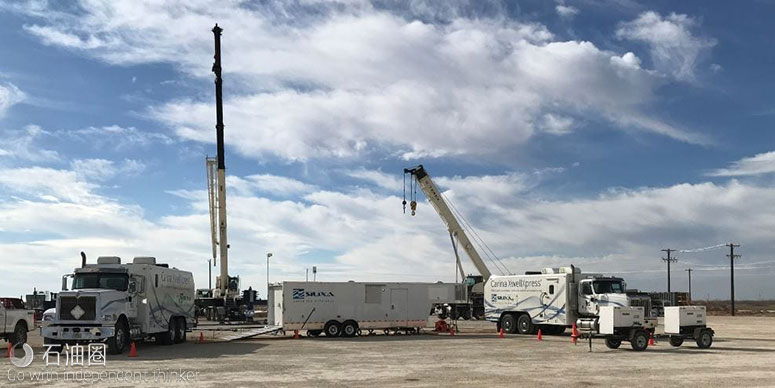A distributed fiber optic sensing company Silixa has been exploring what you can do with more sensitive fibre optic cables in wells – including using them to track fluid flow, detect strain in wells, and monitor fracs.
A distributed fiber optic sensing company Silixa has been exploring what you can do with more sensitive fibre optic cables in wells – including using them to track fluid flow, detect strain in wells, monitor fracs, and understand neighbouring walls.
The advances are helped by Silixa’s Carina Sensing System, an engineered fibre optic system, which uses a special fibre optic cable which has much brighter light scatter. The system has about 100 times higher sensitivity than the predecessor system, the intelligent Distributed Acoustic Sensor (iDAS).
The systems have been used to detect strain (pressure changes) in the overall formation or wells, for example to detect possible changes in caprock integrity. This because small changes in pressure show up with a different light scatter pattern.
The system has been used as flowmeter, because different flow rates of fluid through the well will make a different acoustic signal due to different eddies (vortexes) in the flow.
The cable can be wrapped around pipe to form a flowmeter, which does not require any inhibition of the liquid flow (as a propeller flowmeter within the pipe would).
Silixa has a demonstration model, which it often shows at trade shows, with a fan blowing air through a pipe. There is a fibre optic cable laid along the pipe, which picks up a different acoustic signal depending on the air flow rate.
It is possible to detect the gas volume fraction of a liquid flow, from the different noise the fluid makes.
The system has been used to monitor hydraulic fracturing, with the acoustic signals analysed to understand how much frac fluid has gone into each frac cluster.
It can be used for microseismic analysis, recording where and when rocks have been fractured. This data can be put together with pressure data to see what pressure was required to fracture the rocks.
When used together with knowledge of the location of sound sources, the fibre data can be used to determine the speed of P and S waves through the rock, which can then be used in seismic interpretation.
You can use fibre in one well to monitor what is happening in a neighbouring well, and understand how one well affects another, such as frac in the neighbouring well increasing pressure in the monitored well.
The quality of the recording is similar to placing geophones on the well, says Mahmoud Farhadiroushan, Executive Director of Silixa.
Locating the cable
A common problem with fibre optic cables in wells is that it is impossible to know where the cable is located around the well.
This is important to know if you want to perforate the well (blast holes in it to allow fluid through). You don’t want to perforate the cable.
Sometimes a well is perforated a number of years into its life, for example a well which passes through two hydrocarbon zones, has the lower zone perforated at the beginning of life of the well, and the upper one perforated when production from the first declines.
To solve this problem, Silixa has developed a disposable device, the Cable Orientation Beacon (COB), containing accelerometers which is attached to the outside of the casing, next to the fibre cable.
The Silixa device monitors how many times it has been turned as the casing is inserted into the well, so it knows its orientation. It then communicates this data with an acoustic signal (noise), which is picked up by the fibre optic cable, and can then be reverse analysed to get the orientation data.
The device does not make the acoustic signal continuously, it can be programmed to sound (for example) every 30 minutes, to conserve battery power.
The device can be programmed to only switch on when it reaches a certain temperature, thus conserving its battery life when the system is being installed.
Without this device, the only way to locate the position of a fibre optic cable was to encase it in a metal tube, which can be detected with magnetic sensors in the well. But this metal tube can obstruct the flow of cement around the well, leading to a poor cementing job, Mr Farhadiroushan says.
Silixa is considering developing the technology to install other sensors, such as for pressure or presence of certain chemicals, which might give useful data about what is happening downhole.
Bringing you the best of both worlds: the engineered fibre optic sensing system combining the extensive, high density coverage of distributed sensors with sensitivity beyond that of point sensors.
Carina is a versatile fibre optic sensing system and comprises an advanced optoelectronics interrogator and sensing cables, which are equipped with the new family of engineered Constellation fibres; to gain two orders of magnitude more sensitivity (100x or 20dB improvement) over that achieved with standard fibres.
A transformative performance improvement has been achieved by advancing the state of the iDAS optoelectronics interrogator architecture, together with the introduction of new and proprietary Constellation fibre. This fibre is engineered to provide bright scatter centres along its length to capture and reflect more light back to the interrogator. This is achieved without introducing significant loss to the forward propagating laser pulses.
With Carina Sensing System, it is possible to achieve the massive coverage of distributed sensors without having to compromise on sensitivity.
This step change in performance is most acute in applications with low acoustic signal levels such as is common with leak detection, production monitoring and borehole seismic and microseismic applications where acoustic information can be present at, or below, the inherent system noise floor of the current technology and therefore difficult to detect.
In addition to standard singlemode and multimode optical fibres, a family of Constellation fibres can be incorporated into a number of different cable types for downhole and surface deployment. Silixa also offers an intervention solution using this technology where the fibres are integrated into a hybrid electric-line cable.
Benefits
Unrivalled data quality enables cost effective reservoir characterisation
Extremely high signal to noise ratio gives seismic data quality beyond that of a standard geophone array
Permanent installation reduces OPEX across life of well
Continuous data availability without need for intervention
Eliminate the cost of deferred production
Intervention-free operations allow for surveys in flowing wells
Increase ultimate recovery
Permanent installations enable 4D seismic on demand throughout the life of well
New powerful capabilities without further additional CAPEX
Continuous well diagnostics throughout the life of well

 石油圈
石油圈

